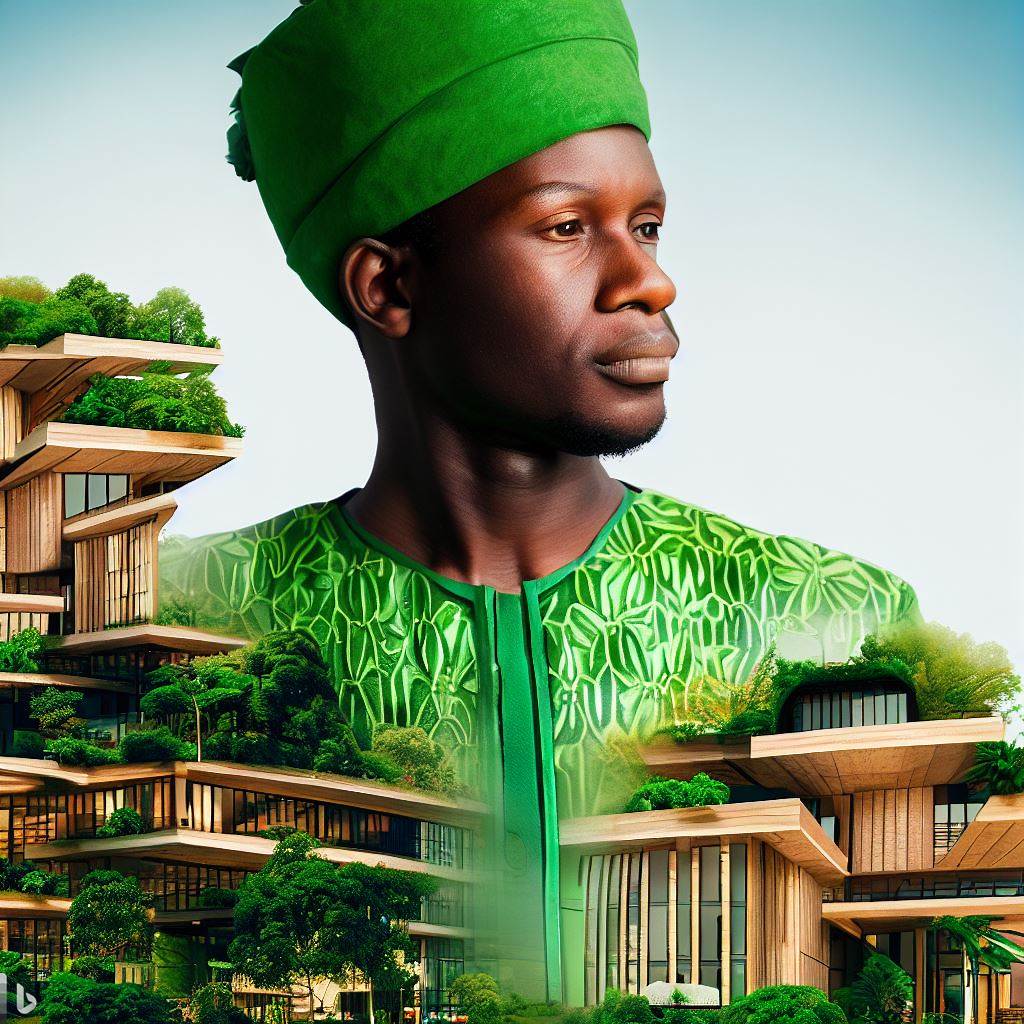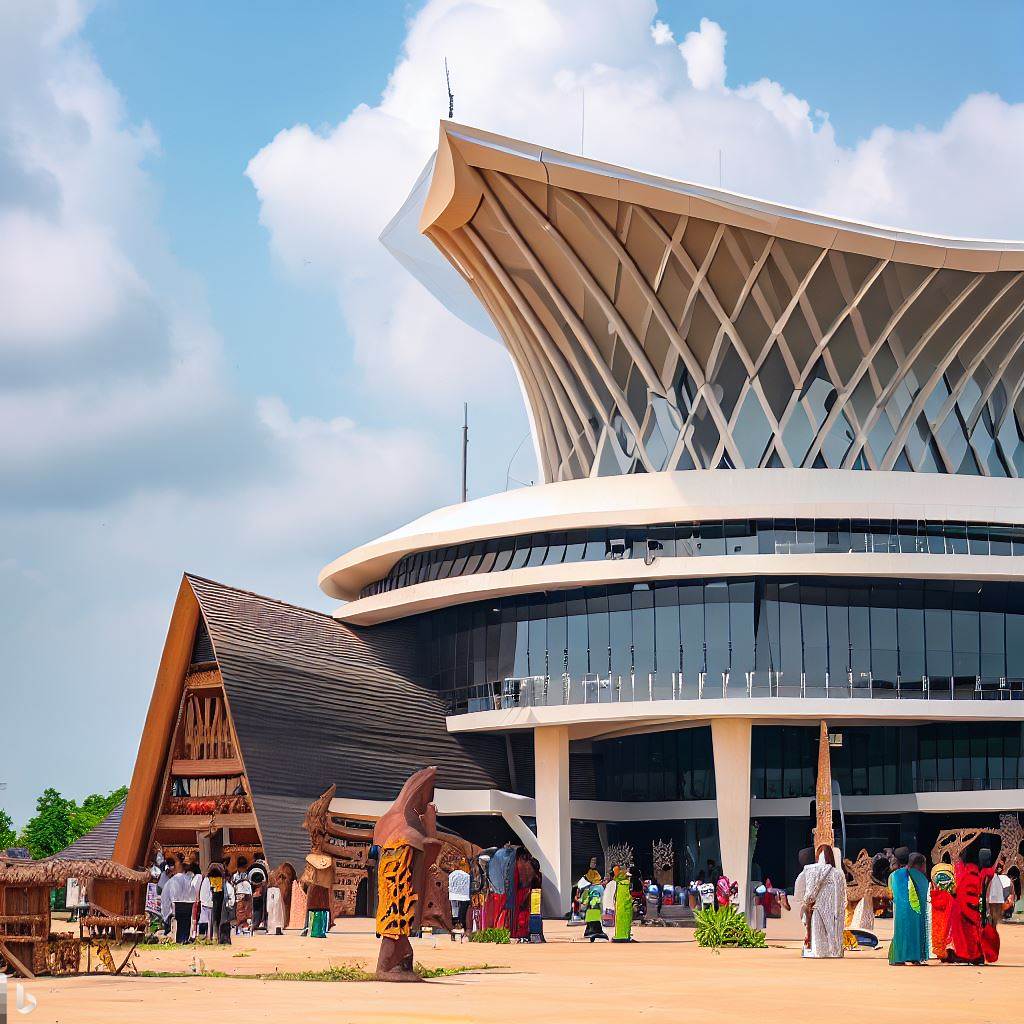Introduction
Sustainable architecture is the practice of designing and constructing buildings that are environmentally, socially, and economically sustainable.
It involves using materials and technologies that reduce the negative impact on the environment and improve the health and well-being of the occupants.
In Nigeria, sustainable architecture is becoming increasingly important as the country faces the challenges of rapid urbanization, climate change, and limited resources.
It is essential to create buildings and cities that are sustainable, affordable, and accessible to all Nigerians.
The trends in sustainable architecture in Nigeria include the use of renewable energy sources like solar power, rainwater harvesting, and the integration of green spaces and vegetation into building design.
These trends seek to create buildings and cities that are energy-efficient, climate-resilient, and aesthetically pleasing.
In summary, sustainable architecture is essential in Nigeria as it has the potential to transform buildings and cities into environmentally friendly and socially responsible spaces.
The trends in sustainable architecture in Nigeria offer a glimpse of what the future of sustainable urbanization in Nigeria could look like.
Read: Role of Women in Nigeria’s Thriving Architecture Scene
Green roofs and walls
Green roofs and walls are becoming increasingly popular in sustainable architecture. The concept of green roofs and walls involves planting vegetation on the roof or wall of a building, creating a green space that offers a range of benefits.
Definition of green roofs and walls:
Green roofs are rooftop gardens that consist of a layer of soil and vegetation, installed over waterproofing and drainage systems.
Green walls, also known as living walls, are vertical gardens that attach to the exterior or interior walls of a building, using a system of modules or trays to support the plants.
Benefits of green roofs and walls in sustainable architecture:
Green roofs and walls reduce urban heat island effect by absorbing and releasing heat through evapotranspiration.
They manage stormwater runoff, filtering pollutants, improving air quality, and reducing sewer system overload.
Green roofs and walls enhance visual appeal, provide habitat for wildlife, and connect occupants with nature.
Examples of sustainable architecture projects in Nigeria that feature green roofs and walls:
- The African Leadership University in Mauritius, designed by Snøhetta, features a green roof that covers the majority of the campus buildings. The roof is planted with native species to provide a habitat for local wildlife and reduce the impact of urbanization on the environment.
- The Lagos Court of Arbitration and Dispute Resolution Center, designed by Patrick Waugh, incorporates a green wall made up of over 4,000 plants. The wall helps to regulate the internal temperature of the building and reduce the energy required for air conditioning.
- The Lekki Conservation Center, designed by Lekki Peninsula Investment, features a green roof that serves as a habitat for local bird species and provides insulation for the building. The roof is also designed to reduce stormwater runoff and improve air quality.
In essence, green roofs and walls are a valuable addition to sustainable architecture projects in Nigeria.
Green roofs and walls offer benefits like reduced urban heat island effect, improved stormwater management, and better air quality.
Architects can create functional and sustainable structures, connecting occupants with nature.
Read: Impact of Nigerian Architecture on Africa’s Skyline
Passive cooling and natural ventilation
Design strategies like passive cooling and natural ventilation work with the natural environment, reducing energy consumption and impact.
Benefits in sustainable architecture include lower energy costs, improved thermal comfort, and healthier indoor air quality.
Some of the sustainable architecture projects in Nigeria that use passive cooling and natural ventilation include:
- The Abeokuta House, which features a double-layered roof that allows hot air to escape and cool air to circulate.
- The Nigerian Institute for Medical Research, which uses a combination of shading devices and natural ventilation to keep the building cool.
- The CC Hub in Lagos, which has a perforated facade that allows for natural ventilation and daylighting.
Incorporating passive cooling and natural ventilation into building design is crucial for achieving sustainable architecture.
These strategies not only decrease energy consumption and operating costs but also create comfortable and healthy indoor environments.
Read: Challenges Faced by Nigerian Architects: A Deep Dive
The Role of Renewable Energy Sources in Sustainable Architecture
Sustainable architecture minimizes environmental impacts and promotes sustainability through renewable energy sources like solar, wind, geothermal, and hydropower.
Benefits of using renewable energy in sustainable architecture:
- Reduces reliance on finite, non-renewable energy sources and greenhouse gas emissions.
- Offers long-term cost-effectiveness, with cheaper maintenance compared to traditional energy sources.
Notable sustainable architecture projects in Nigeria utilizing renewable energy sources:
- Heritage Place in Lagos: 15-story office building using solar and wind energy.
- Nsukka Solar Hospital in Enugu State: Fully powered by a 56-kilowatt solar PV system.
- Central Bank of Nigeria (CBN) Office in Awka, Anambra State: Powered by a large solar panel array.
The use of renewable energy sources is crucial for sustainable architecture, ensuring reduced emissions and cost-effectiveness. Nigeria showcases viable and necessary options for the future in its notable sustainable architecture projects.

Use of Sustainable and Recycled Building Materials in Sustainable Architecture: New Trends in Nigeria
In recent years, sustainability has become a buzzword across sectors, including the construction industry in Nigeria.
Sustainable architecture is the new trend in Nigeria, emphasizing the use of sustainable and recycled materials.
Definition of Sustainable and Recycled Building Materials
Sustainable building materials are environmentally responsible and resource-efficient, meeting present needs without compromising the future.
Recycled building materials are processed or re-manufactured from used products, diverting waste from landfills.
Benefits of Using Sustainable and Recycled Building Materials in Sustainable Architecture
- Reduced environmental impact – The use of sustainable and recycled building materials reduces the environmental impact associated with traditional building materials, especially in terms of resource depletion and pollution.
- Energy efficiency – Sustainable and recycled building materials are energy-efficient, reducing energy consumption in buildings and helping to mitigate climate change.
- Cost-effectiveness – Recycled materials are relatively cheaper than newly manufactured materials, and using sustainable materials can reduce building operating costs in the long run.
- Improved indoor air quality – Sustainable and recycled building materials are usually non-toxic, improve indoor air quality, and reduce the risk of allergic reactions and other health problems.
- Reduced waste – The use of recycled materials reduces the volume of waste going into landfills, contributing to waste reduction and enhancing sustainability.
Read: Dissecting The Architect Registration Council of Nigeria
Examples of Sustainable Architecture Projects in Nigeria that Incorporate Sustainable and Recycled Building Materials
- The African Alliance Climate-Smart Agriculture Project – constructs a sustainable training center using compressed laterite blocks.
- The Eko Atlantic City – In Lagos incorporates recycled concrete blocks and low-emission timber for sustainability.
- The Nigerian Breweries Plc Headquarters – The LEED-certified Nigerian Breweries Plc Headquarters uses recycled steel, bamboo, and local stones.
- The Abuja Green Housing Estate – employs pebbles, laterite blocks, bamboo, and thatched roofs for sustainability.
- The African Elephant Development Initiative (AEDI) – in Nigeria practices eco-tourism with recycled materials like plastic bottles and glass shards.
In fact, the use of sustainable and recycled building materials is a crucial aspect of sustainable architecture in Nigeria.
Such materials are environmentally responsible, cost-effective, and promote resource efficiency.
Given the rising demand for sustainable construction, architects and builders in Nigeria must embrace the use of sustainable and recycled materials to promote sustainable development.
Read: Exploring the Evolution of the Architecture Profession in Nigeria
You Might Also Like: Impact of Nigerian Architecture on Africa’s Skyline
Conclusion
Sustainable architecture is a necessity for Nigeria’s future development. By adopting sustainable architecture practices, we can create environmentally friendly buildings that reduce energy consumption.
Sustainable architecture enhances overall quality of life, creating comfortable living spaces promoting health and well-being.
To ensure that sustainable architecture trends are embraced in Nigeria, architects and stakeholders need to take initiative.
Create awareness of sustainable practices, provide training opportunities, and incentivize adoption of eco-friendly architecture techniques.
Ultimately, the importance of sustainable architecture in shaping Nigeria’s future cannot be overstated. It is up to us to embrace these trends and create a better world for ourselves and future generations.




